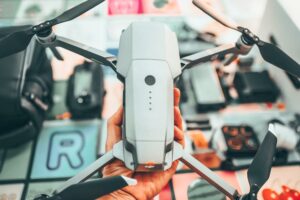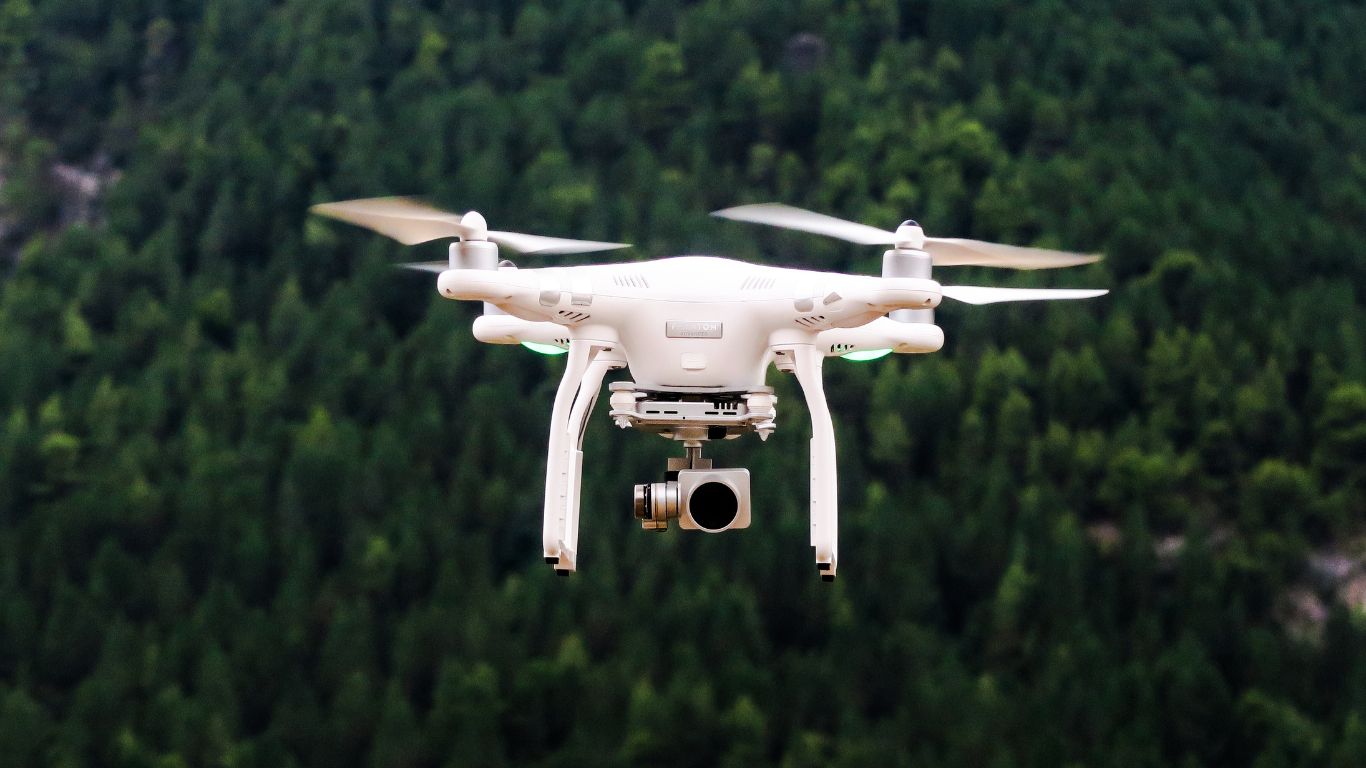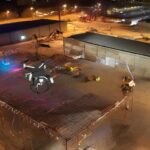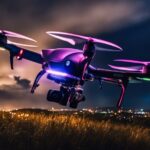The use of drones in hunting activities has raised concerns among wildlife management authorities in Texas. To protect wildlife and maintain ecosystem balance, the Texas Parks & Wildlife Department (TPWD) has implemented strict regulations and permit requirements for drone use in hunting.
Without the necessary permits issued by TPWD, it is unlawful to hunt, capture, take, count, or photograph wildlife using drones.
This article provides an overview of the regulations, permit types, legal implications, reporting requirements, and costs associated with TPWD’s UAS operations in hunting surveillance.
- “Hunt” means capture, trap, take, or kill, or an attempt to capture, trap, take, or kill.
- “Catch” means take or kill and includes an attempt to take or kill.
- “Take,” except as otherwise provided by this code, means collect, hook, hunt, net, shoot, or snare, by any means or device, and includes an attempt to take or to pursue in order to take.
Key Takeaways: Is Drone Fishing Legal In Texas
- The use of drones to hunt, capture, take, count, or photograph wildlife in Texas is illegal without permits issued by the Texas Parks & Wildlife Department (TPWD).
- To use a drone for hunting purposes in Texas, individuals must obtain an Aerial Management Permit (AMP) and a Land Owner Authorization (LOA) from TPWD.
- Recreational or sport hunting using drones is not allowed and is considered a misdemeanor offense.
- Law enforcement agencies in Texas are required to report their unmanned aircraft systems (UAS) operations every odd-numbered year, including the number of times UAS were used, how they aided criminal investigations and law enforcement operations, and the total cost of UAS operations.
Overview of Drone Use Regulations in Texas Hunting
The regulations regarding drone use in Texas hunting require individuals to obtain permits before utilizing drones for hunting activities. This is to ensure the proper and legal use of drones in wildlife surveillance and conservation efforts.
While drones can provide several advantages in hunting surveillance, such as improved monitoring and data collection capabilities, there are also potential drawbacks to consider. One of the main concerns is the impact of illegal drone use on wildlife conservation. Unauthorized drone use can disrupt natural habitats, disturb wildlife, and potentially lead to the harassment or harm of animals.
It is essential to regulate and enforce the use of drones in hunting to protect the well-being of wildlife and maintain the integrity of conservation efforts.
Types of Permits Required for Drone Use in Hunting
To legally use drones in hunting activities in Texas, individuals must obtain the required permits. These permits include an Aerial Management Permit (AMP) and a Land Owner Authorization (LOA). Obtaining these permits is essential to ensure that drone use in hunting is conducted in a regulated and responsible manner.
The Texas hunting permit requirements aim to protect wildlife, promote conservation efforts, and maintain the safety of hunters and the general public. The process for obtaining hunting permits involves submitting an application to the Texas Parks & Wildlife Department (TPWD) and meeting certain criteria.
One of the criteria is demonstrating a legitimate need for aerial assistance in wildlife management or depredation species control. It is important for individuals to familiarize themselves with the specific requirements and guidelines outlined by the TPWD to ensure compliance with the law.
Understanding the Federal and State Laws on Drone Use in Hunting
Federal and state laws on drone use in hunting provide guidelines and regulations that must be adhered to in order to ensure the lawful and responsible use of drones in hunting activities. These laws take into account the environmental impact and ethical considerations associated with the use of drones in hunting.
Drone use in hunting can have significant environmental impacts, as drones have the potential to disrupt wildlife behavior and habitats. They can also disturb other hunters and interfere with the natural hunting experience. Ethical considerations come into play when using drones in hunting, as it raises questions about fair chase and the integrity of the sport.
To address these concerns, permits are required for the use of drones in hunting, with specific regulations in place to ensure the proper use of drones for wildlife management purposes such as Trap Transport and Transplant (TTT) or depredation species control. Recreational or sport hunting using drones is prohibited and violation of these rules is considered a misdemeanor.
| Environmental Impact | Ethical Considerations |
|---|---|
| Disruption of wildlife behavior and habitats | Questions about fair chase and the integrity of the sport |
| Interference with other hunters | |
Consequences of Illegal Drone Use in Texas Hunting
Several penalties are imposed for the illegal use of drones in Texas hunting. Violating the regulations on drone use can have severe consequences, including fines and potential imprisonment.
Here are some of the penalties for violating the rules:
- Monetary fines range from $25 to $500 for a first offense.
- Subsequent offenses can result in fines of up to $2,000 and imprisonment for up to 180 days.
The impact on wildlife can be significant, as drones can disrupt natural behavior and cause stress to animals. In addition to legal penalties, individuals may face the loss of hunting privileges and damage to their reputation.
It is essential to obtain the necessary permits and follow the regulations to ensure the ethical and legal use of drones in hunting.
It is crucial for hunters to understand and comply with the laws to protect wildlife and avoid the serious consequences of illegal drone use in Texas hunting.
Reporting Requirements for Law Enforcement Agencies and TPWD
Furthermore, law enforcement agencies and TPWD are obligated to fulfill reporting requirements regarding the usage of unmanned aircraft systems (UAS) in Texas.
Texas law enforcement agencies are required to issue a written report on UAS usage every odd-numbered year. These reports must be retained for public viewing and, if available, posted on the agency’s publicly accessible website.
The report should include the number of times UAS was used, categorized by date, time, location, and incident type. It should also describe how UAS aided criminal investigations and other law enforcement operations.
Additionally, the report must specify the type and frequency of information collected on individuals, residences, properties, or areas not subject to law enforcement operations. This ensures transparency and allows the public access to UAS reports in the interest of accountability and oversight of drone use in law enforcement.
The Cost and Operations of TPWD’s UAS in Hunting Surveillance

TPWD’s UAS operations in hunting surveillance involve monitoring wildlife activities and enforcing regulations to prevent illegal drone use.
The cost implications and surveillance effectiveness of TPWD’s UAS in hunting surveillance are as follows:
- Cost implications:
- TPWD provides a biennial report on UAS operations, including the total cost of acquiring, maintaining, repairing, and operating UAS.
- The report covers the preceding 24 months.
- The information is logged and entered by each TPWD UAS pilot.
- The report includes details of all TPWD law enforcement UAS operations conducted in 2017-2018.
- A separate document in Adobe PDF format contains the complete 2021-2022 UAS Report.
- Surveillance effectiveness:
- TPWD’s UAS operations play a crucial role in achieving conservation goals and protecting natural resources, as well as human life and property.
- The UAS aids in criminal investigations and law enforcement operations, enhancing overall surveillance effectiveness.
Frequently Asked Questions
Are There Any Exceptions to the Permit Requirements for Drone Use in Hunting in Texas?
There are no exceptions to the permit requirements for drone use in hunting in Texas.
The Texas Parks & Wildlife Department (TPWD) strictly prohibits the use of drones for hunting, capturing, taking, counting, or photographing wildlife without the necessary permits. Federal law also prohibits these activities without a state-issued permit.
It is important to note that drone restrictions in other states may vary, but in Texas, permits are mandatory and any violation of these rules is considered a misdemeanor offense.
Can Recreational or Sport Hunting With Drones Result in Criminal Charges?
Recreational or sport hunting with drones can indeed result in criminal charges. The use of drones for hunting purposes without the necessary permits is illegal in Texas. According to the Texas Parks & Wildlife Department, permits are required for activities such as capturing, taking, or photographing wildlife using drones.
Violation of these regulations is considered a misdemeanor offense. Therefore, individuals engaging in recreational drone hunting without the proper permits may face legal consequences under Texas law.
What Are the Penalties for Illegal Drone Use in Hunting in Texas?
Penalties for illegal drone use in hunting in Texas can result in criminal charges and fines. Recreational drone use in hunting is strictly prohibited without the necessary permits issued by the Texas Parks & Wildlife Department (TPWD). Violation of these regulations is considered a misdemeanor offense.
The TPWD requires an Aerial Management Permit (AMP) and Land Owner Authorization (LOA) for drone use in hunting. It is essential to adhere to these rules to avoid legal consequences and ensure the preservation of wildlife and natural resources.
Are There Any Specific Reporting Requirements for Law Enforcement Agencies Regarding Their Use of Drones in Hunting Surveillance?
Law enforcement agencies in Texas are required to adhere to specific reporting requirements regarding their use of drones in hunting surveillance. These reporting requirements aim to address privacy concerns and ensure transparency.
Agencies must issue a written report on drone usage every odd-numbered year. This report should include details such as the number of times drones were used, the locations, incident types, and how drones aided criminal investigations or other law enforcement operations.
The reports must be retained for public viewing and posted on the agency’s website if available.
How Does TPWD Calculate the Total Cost of Acquiring, Maintaining, Repairing, and Operating UAS for Hunting Surveillance?
TPWD calculates the total cost of acquiring, maintaining, repairing, and operating UAS for hunting surveillance by logging and entering the relevant information provided by each TPWD UAS pilot.
This information is then included in the biennial report on UAS operations, which covers a 24-month period and includes details of all TPWD law enforcement UAS operations conducted during that time.
The report provides transparency regarding the costs associated with UAS operations and ensures accountability in the use of these resources for hunting surveillance.
Conclusion
In conclusion, the use of drones in hunting activities in Texas is strictly regulated by the Texas Parks & Wildlife Department. Permits, such as the Aerial Management Permit and Land Owner Authorization, are required for drone use in hunting, with recreational or sport hunting using drones being prohibited.
Violations of these regulations are considered misdemeanors. Law enforcement agencies and TPWD have reporting requirements for illegal drone use, and TPWD incurs costs for their UAS operations in hunting surveillance.






